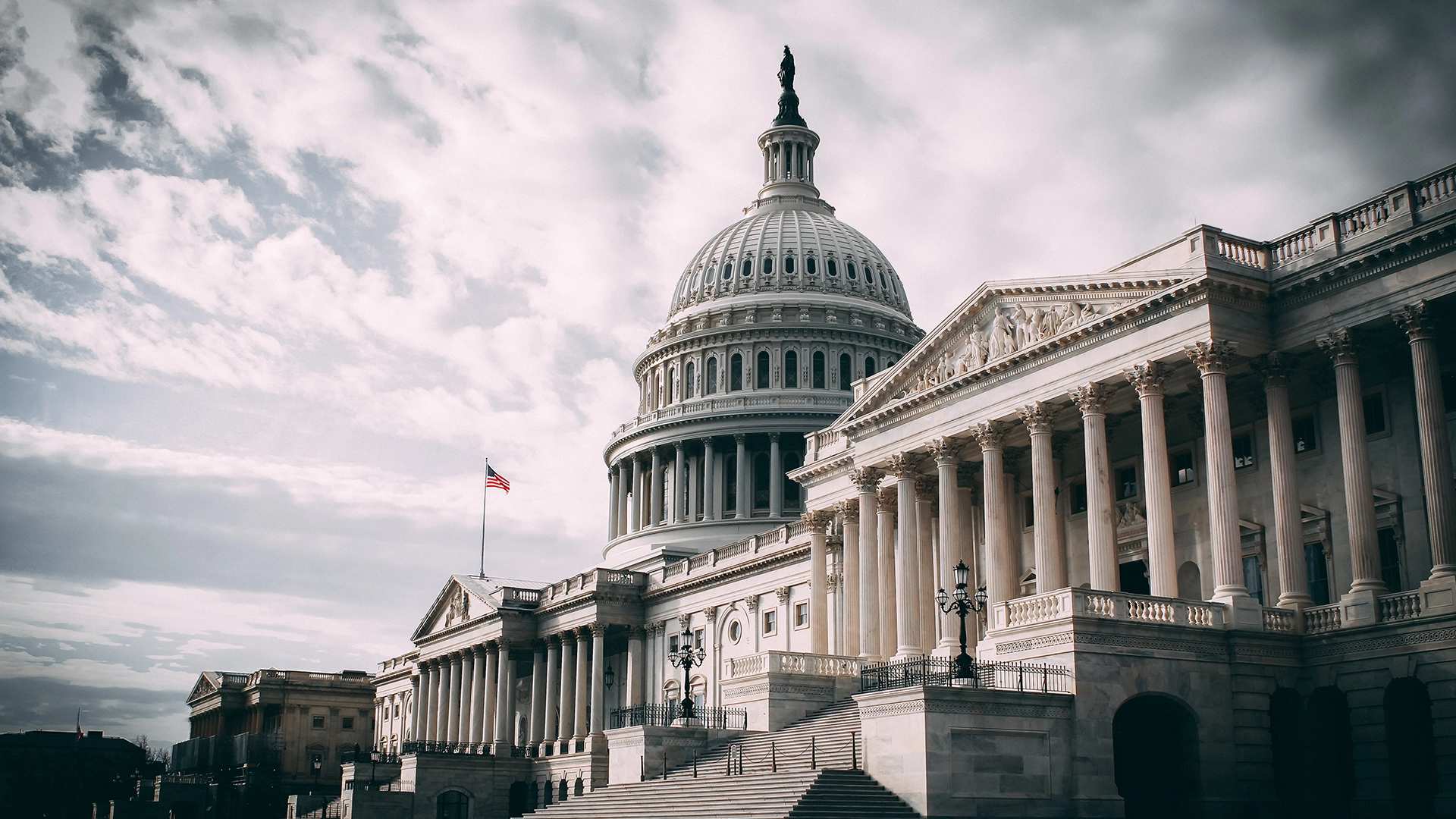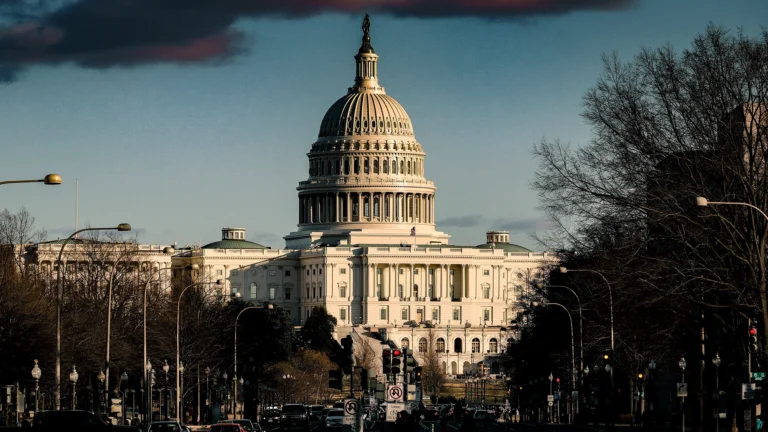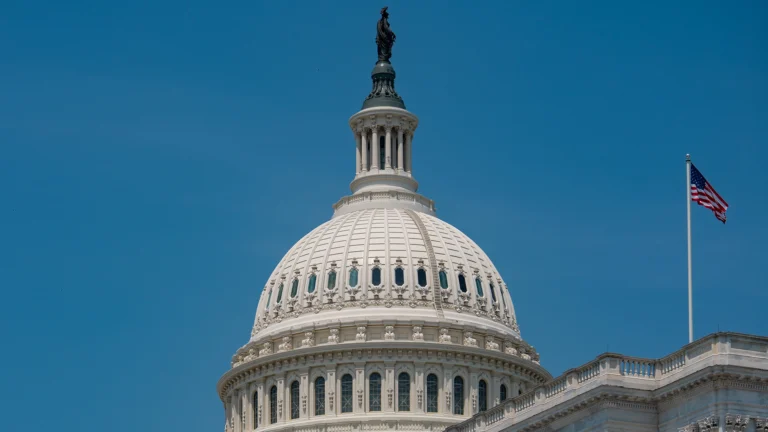|
Getting your Trinity Audio player ready...
|
In October 2025, the United States faced a significant government shutdown that extended beyond 20 days, affecting approximately 2.1 million federal employees and inflicting an estimated $140 billion in economic damage. This shutdown highlighted the profound consequences that arise when Congress fails to pass or the president refuses to sign essential funding legislation.
The disruption rippled across federal agencies, impacting government services, federal workers, and the broader economy, underscoring the critical importance of timely government funding.
Government shutdowns occur when political disagreements lead to a failure in passing appropriations bills or continuing resolutions necessary to fund federal operations. These funding gaps force the suspension of non-essential government functions and furlough many federal employees, while essential workers continue without immediate pay. The resulting halt in government services affects everything from national parks and visa processing to federal contracts and public safety operations, creating widespread challenges for citizens and businesses alike.
Understanding what triggers a government shutdown, who is affected, and the broader economic implications is crucial for leaders, policymakers, and informed citizens. By exploring the causes and consequences of these shutdowns, this article aims to provide clarity on a complex issue that shapes government functionality and public life.
Definition of Government Shutdown
A government shutdown in the U.S. occurs when Congress fails to pass a funding bill and the President does not sign it, leading to a lapse in funding for federal agencies. Congress must pass 12 appropriations bills each year to allocate funding for the government.
Table of Contents
- Definition of Government Shutdown
- What is a Government Shutdown?
- What Triggers a Government Shutdown?
- Historical Context of Government Shutdowns
- Who is Affected During a Government Shutdown?
- How Does the Government Decide Which Services Continue?
- Economic Impact and Funding
- State and Local Governments
- National Security and Public Safety
- Public Perception and Opinion
- Strategies to Prevent or Resolve Government Shutdowns
- Conclusion: Navigating the Complexities of Government Shutdowns
- Frequently Asked Questions (FAQ)
What is a Government Shutdown?
A government shutdown occurs when Congress fails to pass, or the president fails to sign, the necessary funding legislation (such as appropriations or spending bills) to finance federal government operations. This funding gap forces the suspension of non-essential government activities and the furlough of certain federal employees.
Budget legislation comprises laws that allocate resources to government agencies and programs for the upcoming fiscal year. Each fiscal year, Congress must enact these spending and appropriations bills to ensure uninterrupted government operations. Without authorized funding, many government agencies must pause non-essential services, impacting millions of federal workers and the public.
Understanding this process is essential because it directly affects government services, federal employees’ livelihoods, and the nation’s economic stability.
What Triggers a Government Shutdown?
At its core, a government shutdown is a consequence of a funding gap, when Congress fails to enact the necessary appropriations bills or continuing resolutions to fund government activities. Shutdowns occur primarily due to disagreements over budget allocations between Congress and the president. When Congress fails to pass the necessary appropriations bills, a government shutdown occurs.
These appropriations bills are annual funding legislation that allocate resources to federal government agencies and programs, with discretionary spending being most affected by shutdowns. Federal agencies cannot spend or obligate any money without an appropriation from Congress, as mandated by the Antideficiency Act. When these bills are delayed or blocked due to political disagreements (often over spending priorities or policy riders) the government is forced to partially or fully shut down.
A recent example is the 2018-2019 shutdown, the longest in U.S. history, which stemmed from a dispute over border wall funding. Members of Congress are responsible for passing these funding bills. This stalemate exemplifies how policy priorities and partisan conflicts can lead to significant funding gaps, disrupting government functions and services.
During a shutdown, essential employees (including military service members) continue working to maintain critical operations.
Historical Context of Government Shutdowns
The history of government shutdowns in the United States reflects evolving legal interpretations, political conflicts, and fiscal challenges. The first government shutdown due to a budget dispute occurred on May 1, 1980, when the Federal Trade Commission was closed for one day after Congress failed to pass an appropriations bill.
This event followed the Department of Justice’s interpretation of the Antideficiency Act, originally enacted in 1870, which prohibits federal agencies from spending money without congressional appropriations. However, it was not until 1980 that this act was strictly interpreted to require agency closures during funding gaps.
Since the establishment of the current budget process in 1976, the U.S. government has experienced 20 funding gaps, leading to 10 government shutdowns of varying lengths. Prior to the 1980s, funding gaps typically did not cause full shutdowns; agencies continued operating under the assumption that funding would soon be restored.
Among the most notable shutdowns, the 1995-1996 shutdowns under President Bill Clinton’s administration stand out. These two shutdowns, caused by disputes between Clinton and the Republican-controlled Congress over spending cuts, lasted a combined 26 days and significantly impacted government operations and public services.
Another significant shutdown occurred in 2013 during the Obama administration, lasting 16 days due to a standoff over funding for the Affordable Care Act. This shutdown furloughed approximately 800,000 federal workers and disrupted numerous government services.
The longest government shutdown in U.S. history spanned 35 days from December 22, 2018, to January 25, 2019, under the Trump administration. This shutdown arose from disagreements over border wall funding and resulted in about 380,000 federal workers being furloughed, while 420,000 continued working without pay. The extended period of this shutdown caused widespread disruptions across federal agencies and services.
These historical shutdowns highlight the consequences of congressional failure to pass appropriations bills or continuing resolutions, underscoring the critical role of congressional approval in maintaining government operations and funding the government effectively.
Who is Affected During a Government Shutdown?
The impact of a shutdown extends across multiple layers:
- Federal Employees: Non-essential federal workers, known as furloughed federal employees, are placed on temporary unpaid leave. Essential employees, such as military personnel, law enforcement, and air traffic controllers, continue working but often without immediate pay.
The broader federal workforce, including all government employees, is affected, essential workers must report without pay, while non-essential roles are furloughed. Although furloughed federal employees typically receive back pay after the shutdown ends, the financial strain during the shutdown can be severe. - Government Services: Many non-essential government services cease operations or operate at reduced capacity. National parks may close, and visitor services (such as guided tours, information centers, and amenities) are often reduced or suspended during shutdowns. Non-essential services cease during a government shutdown, leading to the closure of national parks and museums, suspension of some research programs, and delays in processing applications.
Visa and passport processing can slow, and administrative functions like tax refunds may be delayed. However, mandatory spending programs such as Social Security, Medicare, and Medicaid continue to operate, ensuring benefit payments persist despite funding lapses. - The Economy: Shutdowns have tangible economic consequences. The Congressional Budget Office estimated that the 2018-2019 shutdown reduced GDP growth by approximately 0.1 to 0.2 percent and cost the government billions in lost revenue and back pay.
- Federal contractors and government contractors are particularly affected, often facing operational disruptions and lacking eligibility for back pay, which can threaten cash flow and job security. Shutdowns can also delay or halt the issuance of federal loans and federal permits, impacting private-sector investment and economic growth.
- Businesses may be unable to obtain federal permits during a shutdown, causing project delays. Additionally, the government may accrue penalty interest payments on overdue obligations, further increasing financial costs. Businesses dependent on government contracts or services often face disruptions, which can ripple through local and national economies.
How Does the Government Decide Which Services Continue?
The Office of Management and Budget (OMB) issues guidance to each federal agency to determine essential versus non-essential services. Essential services are those necessary to protect life and property, maintain national security, or fulfill constitutional responsibilities.
Federal agencies are responsible for putting contingency plans in place, outlining which functions will continue during a shutdown and which employees will be furloughed. Each federal agency develops its own contingency plan for a government shutdown, following guidance issued by the Office of Management and Budget.
For example, during shutdowns, agencies like the Department of Homeland Security maintain critical operations such as border security and disaster response, while agencies like the Environmental Protection Agency may suspend certain regulatory activities. The Department of Health and Human Services (HHS) continues to provide essential health and human services, ensuring that critical human services such as healthcare, food assistance, and public health efforts are maintained during a shutdown.
Additionally, federal courts continue to operate using specific funding sources, and a federal judge may address legal challenges and maintain legal operations during shutdowns. All federal court operations are initially funded through collected fees, allowing some operations to continue during a shutdown before further funding is exhausted.
Economic Impact and Funding
Economic Consequences of Shutdowns
Government shutdowns represent a profound strategic miscalculation that imposes substantial economic costs across both federal operations and the broader U.S. economy. The 2013 government shutdown exemplifies this fiscal reality, Standard & Poor’s analysis demonstrated that this political standoff extracted $24 billion from economic output, delivering a measurable 0.6% reduction in annualized GDP growth. According to a Senate report, government shutdowns in 2013, 2018, and 2019 cost taxpayers nearly $4 billion.
The Congressional Budget Office’s authoritative assessment of the 2018-2019 shutdown revealed an $11 billion GDP contraction, with $3 billion in permanent economic losses that remained unrecoverable even following government reopening.
Direct Costs to Federal Operations
Executive leadership must recognize that government shutdowns generate significant direct costs to federal operations, contradicting conventional budget management principles. The Congressional Budget Office’s rigorous analysis documented $2.5 billion in compensation paid to furloughed federal employees for non-productive hours during the 2018-2019 shutdown.
The Committee for a Responsible Federal Budget’s comprehensive research establishes that these events systematically cost more than they preserve, driven by productivity losses, delayed government services, and mandatory back-wage obligations, a finding that challenges the fundamental premise underlying shutdown strategies.
Broader Financial Implications
These authoritative findings underscore that government shutdowns transcend mere political maneuvering; they constitute strategic decisions with quantifiable financial consequences affecting federal operations, workforce productivity, and macroeconomic performance across the enterprise economy.
State and Local Governments
Impact on State and Local Operations
The government shutdown impacts demand-strategic assessment well beyond Washington’s corridors, requiring a systematic analysis of cascading effects across state and local government operations nationwide.
Essential service delivery at sub-federal levels relies on critical federal funding streams, and when these revenue sources are interrupted or suspended, local leadership must implement decisive resource-allocation strategies to maintain operational continuity.
Funding Challenges and Program Continuity
During federal government closures, state executives must deploy internal capital reserves to sustain mission-critical programs including Medicaid infrastructure and Supplemental Nutrition Assistance Program operations.
The Special Supplemental Nutrition Program for Women, Infants, and Children faces escalating funding vulnerabilities, with exposure risks compounding systematically as shutdown duration extends. These operational disruptions force state leadership to implement strategic budget reallocations, restructure payment schedules, and execute temporary service optimization protocols.
Financial Planning and Intergovernmental Coordination
Furthermore, federal funding delays create substantial complications for state and local financial planning frameworks, directly constraining the capacity to deliver essential services to constituent populations.
The systemic effects of federal government operational suspension underscore the fundamental interconnectedness of multi-tiered government funding architecture, demanding strategic risk management across all governmental levels.
National Security and Public Safety
Essential Workforce Continuity
When government operational disruptions occur, safeguarding national security infrastructure and public safety protocols becomes the paramount strategic imperative for federal institutions.
Mission-critical personnel (including air traffic control specialists and Transportation Security Administration operatives) maintain operational continuity, demonstrating institutional resilience even when compensation mechanisms experience temporary delays. These essential workforce components constitute the backbone of the nation’s transportation security architecture and border protection frameworks.
Workforce Prioritization and Reductions
Nevertheless, workforce categorization during operational suspensions reflects strategic prioritization rather than universal deployment. Numerous federal law enforcement professionals, border security specialists, and additional public safety personnel may face temporary workforce reductions, potentially constraining operational capacity and resource allocation.
Department of Homeland Security and Department of Defense Responses
The Department of Homeland Security’s strategic contingency framework exemplifies this approach, designating approximately 95% of its professional workforce to sustain operational status, either through alternative funding mechanisms outside standard appropriations channels or through mission-critical classifications essential for life preservation and property protection.
Correspondingly, the Department of Defense implements comprehensive planning protocols ensuring substantial civilian workforce continuity during operational interruptions, thereby maintaining military preparedness standards and national defense capabilities.
Challenges and Risk Mitigation
These institutional contingency strategies represent calculated risk mitigation approaches, yet government operational suspensions inevitably generate complex operational challenges for agencies entrusted with public protection mandates.
Public Perception and Opinion
Executive Perspectives on Shutdowns
Executive sentiment regarding federal government shutdowns reflects sophisticated institutional analysis and strategic concerns about governance frameworks. Senior stakeholders view these disruptions through dual lenses; some perceive them as systemic dysfunction within constitutional separation of powers, while others regard them as essential fiscal discipline mechanisms or principled resistance against institutional corruption.
This analytical divide mirrors the strategic thinking found in Goldman Sachs’ governance assessments and McKinsey’s institutional risk frameworks.
Public Support for Reform
Comprehensive polling intelligence demonstrates overwhelming executive consensus favoring structural reforms to eliminate future shutdown scenarios.
In 2025, 76% of respondents endorsed automatic continuing appropriations to maintain government operations during budget negotiations, with merely 6% opposing such frameworks.
The Committee for a Responsible Federal Budget has documented these shutdowns as strategic political instruments, calculated brinkmanship tactics engineered to extract concessions from opposing institutional forces, consistent with game theory applications seen in Bloomberg’s political economy analysis.
Strategic and Institutional Impacts
Strategic assessment reveals government shutdowns generate substantial institutional costs and operational disruptions, creating measurable impacts across federal budgets, agency performance, and stakeholder confidence.
The ongoing debate surrounding their tactical deployment and systemic consequences continues to influence executive opinion and policy frameworks across Washington’s institutional landscape and global governance circles.
Strategies to Prevent or Resolve Government Shutdowns
Preventing a shutdown largely depends on timely legislative action. Passing full-year appropriations bills or continuing resolutions before the fiscal year begins ensures uninterrupted funding. However, political realities often make this challenging.
Temporary funding measures, known as continuing resolutions (CRs), can keep the government open while negotiations continue. Yet, reliance on CRs can disrupt agency planning and operations, underscoring the importance of passing comprehensive funding legislation.
Leaders and stakeholders can advocate for reforms such as automatic continuing appropriations to prevent future shutdowns, enhancing government stability and public trust. Every government shutdown since 1990 has been resolved by passing a continuing resolution.
Conclusion: Navigating the Complexities of Government Shutdowns
Government shutdowns are more than political standoffs; they have significant impacts on federal operations, employees, and the economy. These events disrupt essential government functions, furlough workers, and create uncertainty for businesses and communities relying on government services. Understanding shutdowns helps anticipate challenges and reduce their effects.
Leaders, business owners, and citizens should advocate for responsible governance and timely congressional funding. Passing full-year appropriations bills or continuing resolutions prevents costly shutdowns and ensures continuity of critical services that protect life, property, and economic stability.
Prioritizing timely funding benefits federal employees, agencies, taxpayers, and communities. Promoting collaboration and accountability among lawmakers can reduce shutdown frequency and severity, strengthening public trust and government effectiveness.
Frequently Asked Questions (FAQ)
What happens to federal employees during a government shutdown?
Non-essential federal employees are typically furloughed, meaning they are placed on temporary unpaid leave. Essential employees continue working but may experience delayed pay. Once the shutdown ends, furloughed employees generally receive back pay for the period they were off work.
Are Social Security and Medicare affected by a government shutdown?
No. These programs are funded through mandatory spending, which is not subject to annual appropriations. Benefit payments continue during a shutdown, although some administrative services may experience delays. Social Security benefits continue to be paid during a government shutdown.
Can government shutdowns affect tax refunds?
Yes. Agencies like the Internal Revenue Service may operate with limited staff, potentially delaying the processing of tax refunds and other services during a shutdown.
How long can a government shutdown last?
There is no fixed duration. Shutdowns last until Congress passes and the president signs funding legislation. The longest shutdown in U.S. history lasted 35 days (2018-2019).
What is a continuing resolution, and how does it relate to shutdowns?
A continuing resolution is temporary legislation that extends government funding at current levels, preventing a shutdown while lawmakers negotiate full appropriations bills. It serves as a stopgap measure to keep the government open.



